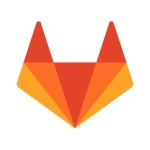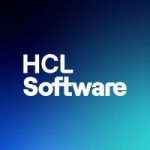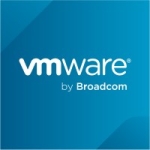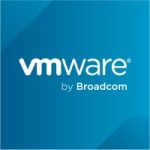What is our primary use case?
We use it for patching and configuration management.
We are a healthcare institution. We have less than 500 hosts. Ansible is used between the infrastructure and applications, and primarily has Red Hat as the OS.
How has it helped my organization?
It has improved our organization through provisioning and security hardening. When we do get a new VM, we have been able to bring on a provisioned machine in less than a day. This morning alone, I provisioned two machines within an hour. I am talking about hardening, installing antivirus software on it, and creating user accounts because the Playbooks were predesigned. From the time we got the servers to the actual hand-off, it takes less than an hour. We are talking about having the servers actually authenticate Red Hat Satellites and run the yum updates. All of that can be done within an hour.
What is most valuable?
- Ad-hoc commands
- Playbooks
- Setting up and deleting users
- Patching
- Using it for quick and dirty deployment of scripts.
The YAML syntax is easy to use, but it takes some getting used to. I feel like Microsoft Visual Studio helps with the YAML syntax, lining it up correctly. However, if you're doing it from the command line without actual spacing, that could be a little problematic. The new version of Visual Studio is quite helpful because Git is integrated with it. The YAML markdowns are also in place. My staff doesn't need special coding skills to use it.
We have multiple Playbooks to configure a server. We can break it up or make one main YAML script to push out all the individual dependencies.
What needs improvement?
When you set up Playbooks, I may have one version of the Playbook, but another member of the team may have a different vision, and we will not know which version is correct. We want to have one central repository for managing the different versions of Playbooks, so we can have better collaboration among team members. This is our use case for using Git version control.
Collaboration across teams is a great goal to accomplish, but that would necessitate more visibility to other teams of what Ansible is capable of with the database teams and other individual applications. Because we have so many applications, I don't know if they are aware of how Ansible could be beneficial to them. That would necessitate a broader conversation within the IT infrastructure application teams.
While it saves time with fewer moves, there could be still room for improvement because we do not actually manage the VMs. Instead, this is managed by the Windows team, who spins up the VM. Then, once the VM is handed off, we do the security hardening. If we received the request from the application owner to spin up the VM to hand it off, then we could take that entire process and get it streamlined. Whereas, it is handled by a different team right now.
It would be great if we could leverage Ansible Tower and Red Hat Satellites more.
API integration would help because right now our security team uses Splunk, and they are independent of my team, which is the Unix team. Therefore, if we could tie in Splunk with products, like Ansible, Cylance, and Rubrik for backup, then we could get all that information in a central console. We have not previously raised this suggestion because our Ansible Engine needs to be upgraded so we can get support for the Ansible product.
For how long have I used the solution?
We have been using Ansible for at least four years.
What do I think about the stability of the solution?
We have not had any issues with Ansible. One of the projects that we have allocated for this year is to migrate our control station from RHEL 6 to RHEL 7.
We really don't have anyone maintaining it. It was a plug and play solution. We downloaded Ansible and ran it, because everyone knows how to use Ansible on the team at this point. Right now, I am trying to get to the next phase of using Git to set up more version control.
What do I think about the scalability of the solution?
The scalability is excellent.
Four guys use it on the Unix team.
Which solution did I use previously and why did I switch?
We were previously using Bash scripting.
We did try BigFix for two years. However, because of costs, Ansible proved to be better cost-wise. The licensing fee was a big issue with using BigFix. Control from the BigFix perspective was a concern, because you were locked into the GUI. With Ansible, we were able to do everything from the command line and touch the entire environment from the command line. Once you use BigFix and an issue, you then have to log out or go into the box from one of the servers, but you were locked into the GUI in BigFix.
How was the initial setup?
It is agentless. All we had to do is set up the control station, then Python was installed on all our Linux hosts. So, it was easy. The deployment took less than an hour.
The SSH keys were already in place. We already had the account, where we tested it out beforehand. Therefore, we knew exactly what we needed to do to deploy it. The keys were the hardest thing to set up and that was already in place (prior to Ansible).
What about the implementation team?
The entire Linux group of four guys was involved in the deployment. We never had to use Red Hat resources to set up Ansible.
What was our ROI?
Ansible is primarily used for provisioning or hardening our servers. The realization of getting a server from testing to actual production is very short in our environment because the processes have been streamlined. Before Ansible, the processes were a lot more unwieldy. We went from a week to less than a day where you can get your server hardened, provisioned, and handed off to the application owner.
Costs are negligible when using Ansible. The costs are just learning to use the solution's various options. We save time and efficiency versus other solutions.
What's my experience with pricing, setup cost, and licensing?
We have tested out Ansible Tower, but there is a budget issue, so that is in our next phase.
Red Hat's open source approach was a factor when choosing Ansible, since the solution is free as of right now.
Which other solutions did I evaluate?
We have Red Hat Satellites and looked into Red Hat Insights, which we are still not fully deployed on yet. The integration between Red Hat solutions is seamless.
We looked into BigFix. I also looked at SaltStack and Puppet, but didn't get anywhere with that. I wanted something that had ease from a management perspective. Other solutions besides Ansible needed us to use agents, and I felt that would cause too many problems. Management didn't want a disruption of servers or downtime. I couldn't give them the assurance that installing something with an agent would not cause issues. So, this affected our decision to go with Ansible.
I don't think any product that we looked into could compare to Ansible.
What other advice do I have?
Test the environment because it is easy to use. Once you are proficient with Unix and Linux, it is extremely easy to use it: Setting up the inventory system, YAML files, and SSH keys.
I have no complaints about Ansible. I just wish I had more time to really delve into it.
I think we not using Ansible to its fullest potential, because of:
- Training.
- Time.
- Not knowing all the options available.
I haven't been exposed to Ansible Tower much. I have only tested it out three times. Right now, I am a little rusty on it, so it will take some getting used to again. It is more GUI-based, so it is pretty user-friendly.
The biggest lesson learnt: There are multiple ways of doing the same thing.
I would rate this solution as a nine (out of 10) because of the configuration management for all our servers in the environment. It can be used within the networking field for all devices, such as Cisco switches. The solution speaks to Windows hosts as well. It just takes time to use all the functionality and get it visible across the organization.
Which deployment model are you using for this solution?
On-premises
Disclosure: My company does not have a business relationship with this vendor other than being a customer.


















